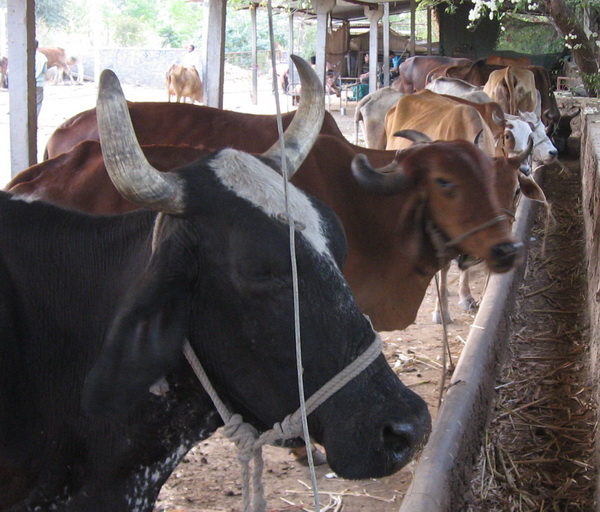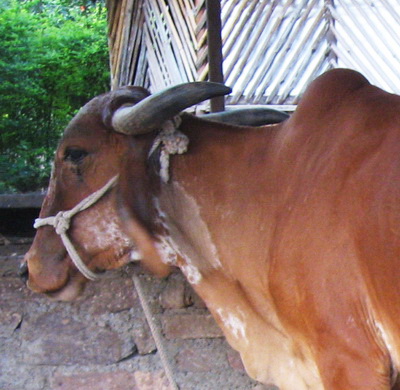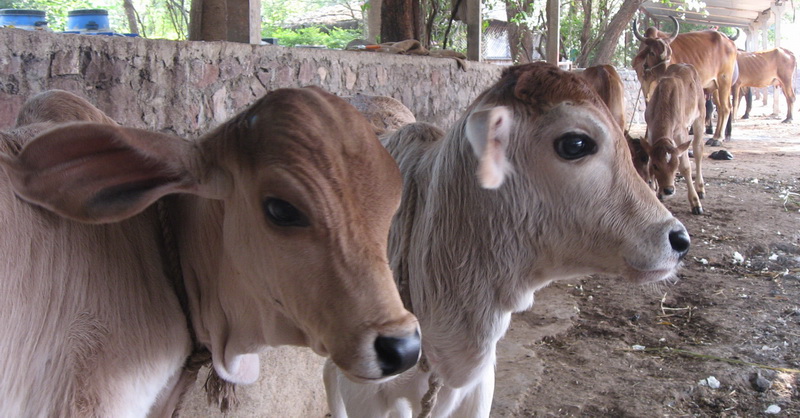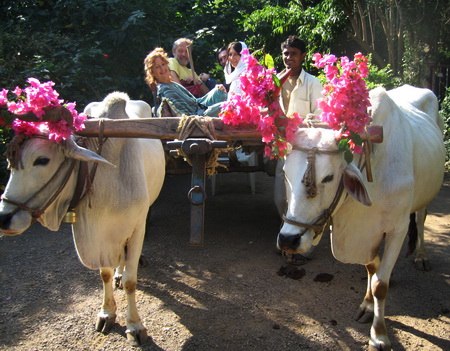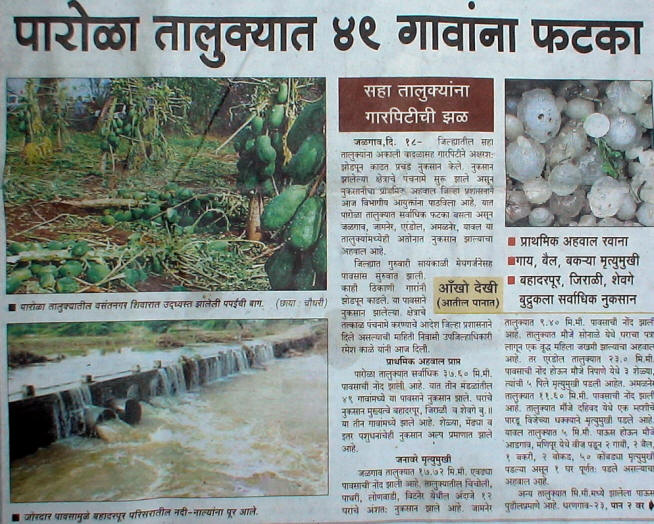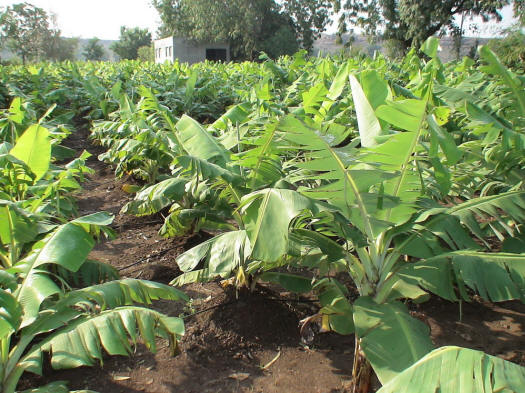Village: Modaga, District: Belgaum
Karnataka, India
Sericulture
“I started doing Agnihotra in my green house and in a few weeks time it showed results. First the birds moved in; then came the predators to destroy the attack of whiteflies on gerbera plants in the green house. The Resonance Point was then set up and from then on there was no stopping us. Results flowed one after the other. Here are some of my experiences which I want to share with you.”
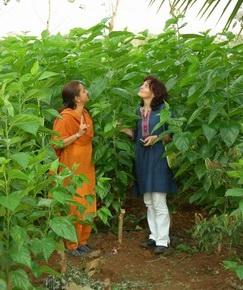 “In the first three months of starting Agnihotra on the farm, I noticed a lot of birds in the farm. They fed on pests in the green house and also later made my farm their home and started nesting giving a new generation of birds. Distinctly visible are the greater coucal (bharadwaj), asian koel, parrots, love birds, owls, sparrows, crows, cranes, wood pecker, pigeons, bulbuls, babblers, fly catchers, robins, baya weaver, kingfishers, mynas, and lots more and in pairs.”
“In the first three months of starting Agnihotra on the farm, I noticed a lot of birds in the farm. They fed on pests in the green house and also later made my farm their home and started nesting giving a new generation of birds. Distinctly visible are the greater coucal (bharadwaj), asian koel, parrots, love birds, owls, sparrows, crows, cranes, wood pecker, pigeons, bulbuls, babblers, fly catchers, robins, baya weaver, kingfishers, mynas, and lots more and in pairs.”
“Once all of a sudden, I noticed a hundred odd garden lizards on the casuarina trees adjoining the green house. I failed to understand this phenomenon. I also killed one as it was entering my sericulture rearing shed mistakenly thinking that they had arrived to eat the silk worms. Few days passed and then all of them disappeared. The lady worker reported that day “all gerbera plants are free from white fly attack.” No white fly, No garden lizards? Such was the effect of Agnihotra.”
“My sericulture crops which suffered due to diseases gradually improved. Last two years there have been NO crop failures. Agnihotra?”
“Leaf quality, size of leaf improved tremendously and it showed on the yield/acre. Agnihotra indeed.”
“In the last one year I have regularly obtained 80kg per 100 dfls (disease-free layings). That is 30% more than the state’s average and 20% higher than any good sericulturist. More Agnihotra!”
“Powdery Mildew is a common pest on mulberry leaf. But my farm is free from it by the presence of the Lady bird beetle (Scymnus nubilus) which are in abundance acting as a natural predator. It is also found in larger quantities in the garden adjoining the Agnihotra kutir. No mealy bugs too. Unbelievable Agnihotra.”
“Number of earthworms in the farm has increased and you can see herds of millipedes. I don’t know what they are doing there. Men at work? Agnihotra???”
“I have reports from the CSB (Central Silk Board) that in one of the crops of hybrid silkworms, (csr2 X csr4), the pairing was so great that it yielded 62g eggs/100 cocoons as against the average being 26g and a good yield is around 40g. Amazing Effect. Agnihotra”
 “In my latest crop, the pupa was so full of vigour and vitality. The scientist at the grainage at CSB’s Malavalli unit informed that there will be three pairings taken from each of the male moths. Average is one pairing and good being two. Result is awaited on the actual performance. Agnihotra all the way.”
“In my latest crop, the pupa was so full of vigour and vitality. The scientist at the grainage at CSB’s Malavalli unit informed that there will be three pairings taken from each of the male moths. Average is one pairing and good being two. Result is awaited on the actual performance. Agnihotra all the way.”
“My cocoons are purchased instantly in the auction fetching better rates. Reelers have expressed higher silk content in my cocoons, so they bid for a higher price. Shortly I will be having a tie up with a quality reeler from Sirsi for reeling Cocoons and with Malavalli grainage for my seed cocoons. Customer confidence made possible by Agnihotra results.”
“During the time when woolly aphid attacked sugarcane crop, my neighbour informed me it was visible that his 2 acre sugarcane was unaffected when the whole village had the problem. No boundaries for Agnihotra.”
“No labour problems. Brilliant ideas in allocating jobs with responsibilities, ensuring quality work. Harmony and vision through Agnihotra?”
“My Manager who does the regular Agnihotra on the farm and also consumes the ash has his Diabetes well in control. You will not believe that I use only Agnihotra ash as antiseptic for all cuts and bruises. No Dettol please! Found the healer!! Agnihotra the saviour!!!”
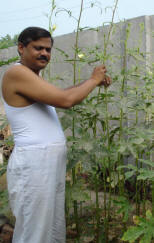 Here everything is in good progress. We are sending you some pictures of the vegetables from our little HOMA ORGANIC GARDEN in Amalner city, Maharashtra which is in the dry land region of Central India where temperatures reach up to 48 degrees in summer.
Here everything is in good progress. We are sending you some pictures of the vegetables from our little HOMA ORGANIC GARDEN in Amalner city, Maharashtra which is in the dry land region of Central India where temperatures reach up to 48 degrees in summer. 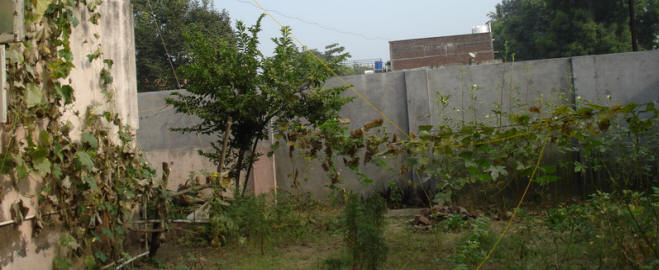
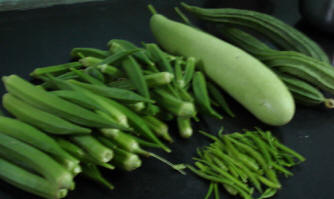
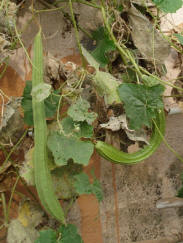


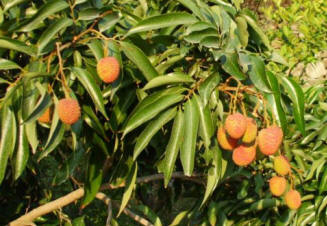
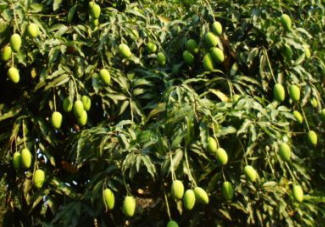
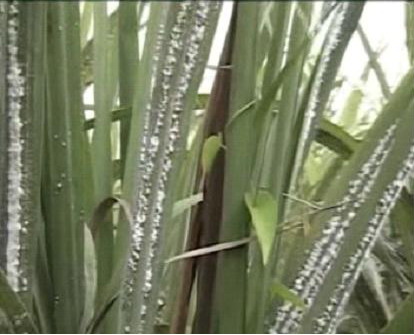
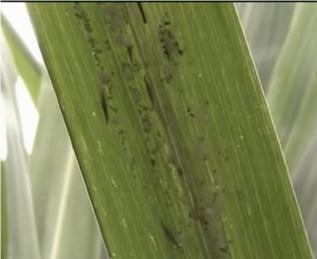
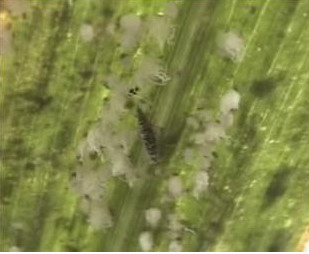
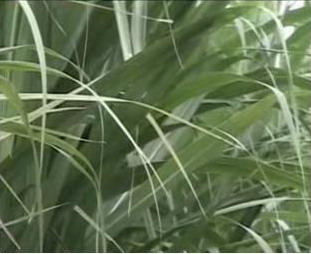
 “In the first three months of starting Agnihotra on the farm, I noticed a lot of birds in the farm. They fed on pests in the green house and also later made my farm their home and started nesting giving a new generation of birds. Distinctly visible are the greater coucal (bharadwaj), asian koel, parrots, love birds, owls, sparrows, crows, cranes, wood pecker, pigeons, bulbuls, babblers, fly catchers, robins, baya weaver, kingfishers, mynas, and lots more and in pairs.”
“In the first three months of starting Agnihotra on the farm, I noticed a lot of birds in the farm. They fed on pests in the green house and also later made my farm their home and started nesting giving a new generation of birds. Distinctly visible are the greater coucal (bharadwaj), asian koel, parrots, love birds, owls, sparrows, crows, cranes, wood pecker, pigeons, bulbuls, babblers, fly catchers, robins, baya weaver, kingfishers, mynas, and lots more and in pairs.” “In my latest crop, the pupa was so full of vigour and vitality. The scientist at the grainage at CSB’s Malavalli unit informed that there will be three pairings taken from each of the male moths. Average is one pairing and good being two. Result is awaited on the actual performance. Agnihotra all the way.”
“In my latest crop, the pupa was so full of vigour and vitality. The scientist at the grainage at CSB’s Malavalli unit informed that there will be three pairings taken from each of the male moths. Average is one pairing and good being two. Result is awaited on the actual performance. Agnihotra all the way.”
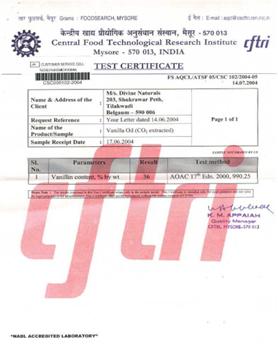
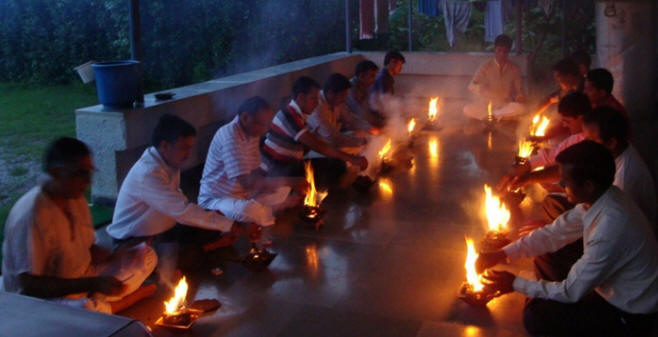
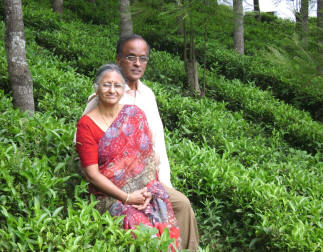 “Since we started doing Homa Therapy and applying Biosol made with Agnihotra ash, our tea leaves are without infection. We have not had any crop loss due to pests or disease. We pruned our bushes recently and there has been no infection at all. The new leaves are green and lush. All tea leaves have a healthy sheen (glow). The leaves remain fresh even hours after picking. And the quality of leaves has improved greatly!”
“Since we started doing Homa Therapy and applying Biosol made with Agnihotra ash, our tea leaves are without infection. We have not had any crop loss due to pests or disease. We pruned our bushes recently and there has been no infection at all. The new leaves are green and lush. All tea leaves have a healthy sheen (glow). The leaves remain fresh even hours after picking. And the quality of leaves has improved greatly!”
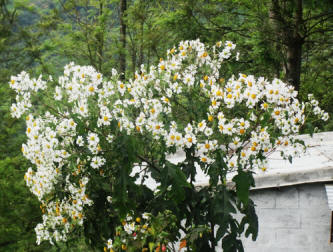 “There was one more tree whose name we don’t know and which grew from a small cutting to about 3.5 meters tall in one year and produced a crown full of flowers (see photo left). Another cutting of this was planted by us in a pot and then was passed on to my wife’s sister who lives about 8 Kms from our house. It grew to about 0.5 meter at the end of one year and there were no flowers.”
“There was one more tree whose name we don’t know and which grew from a small cutting to about 3.5 meters tall in one year and produced a crown full of flowers (see photo left). Another cutting of this was planted by us in a pot and then was passed on to my wife’s sister who lives about 8 Kms from our house. It grew to about 0.5 meter at the end of one year and there were no flowers.”